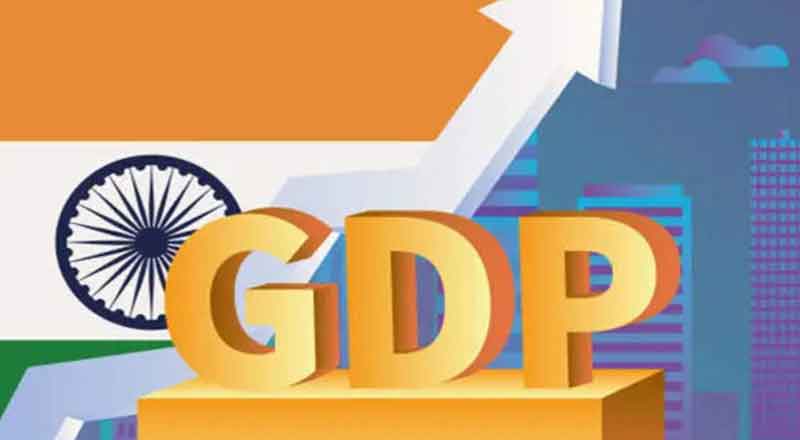India is on a rapid trajectory toward becoming the world’s third-largest economy by 2030, according to a recent report from S&P Global. With its expanding middle class, robust economic growth, and burgeoning industrial sectors, India is set to surpass major economies, trailing only the United States and China. However, alongside these promising developments, the country faces critical challenges, particularly from its growing population, which threatens to strain its infrastructure and resources.
India’s Economic Surge: A Global Shift
According to S&P Global, India is well-positioned to become the fastest-growing major economy over the next three years, with the potential to surpass Japan and Germany by 2030. This projection underscores a significant shift in global economic dynamics, placing India on the global stage as a dominant player.
Already the fifth-largest economy, India’s gross domestic product (GDP) is expected to continue growing at a rapid pace, driven by strong government reforms, foreign investment, and an increasingly skilled workforce. With ambitious plans to become a $30 trillion economy by 2047, the country is steadily working toward this goal by focusing on high-potential sectors like information technology, pharmaceuticals, and renewable energy. The ongoing efforts to boost manufacturing through initiatives like “Make in India” are further attracting global capital, positioning India as a key destination for international investors.
India’s recent inclusion in JP Morgan’s Government Emerging Market Bond Index has provided an additional boost, unlocking resources in domestic capital markets and offering access to new avenues of government funding. This milestone is seen as the first step in a broader effort to improve market access and attract more foreign investment.
The Double-Edged Sword of Population Growth
While India’s economic future appears bright, the country’s rapidly growing population presents both opportunities and serious challenges. Having recently surpassed China as the world’s most populous country, India now boasts a massive labor force and consumer base, which positions it well for continued economic expansion. However, the sheer size of the population also exacerbates pressing issues related to infrastructure, healthcare, education, and employment.
S&P Global’s report highlights that the demands of such a vast population will require unprecedented investments in public services and infrastructure. Urbanization, in particular, is accelerating at a pace that threatens to overwhelm existing systems, as more people migrate to cities in search of better opportunities. In response, India must prioritize infrastructure development, from transportation to digital networks, to meet the needs of its growing populace.
The government faces the complex task of balancing economic growth with inclusive policies that address socio-economic disparities and create sustainable solutions for managing overpopulation. Failure to do so could result in rising unemployment, environmental degradation, and a widening gap between urban and rural populations.
India’s Response to Global and Domestic Challenges
As India’s economy continues its upward march, the global landscape presents additional challenges. Inflation, disruptions in global supply chains, and ongoing geopolitical tensions, particularly between major economic players, could affect the pace of India’s growth. However, the government has shown a proactive approach to mitigating these risks, with policies designed to strengthen domestic industries and attract foreign direct investment (FDI).
India’s digital transformation agenda is a key part of this strategy, with efforts to extend internet access and digital literacy across rural areas. This push for a more connected economy will be crucial in unlocking new growth opportunities and ensuring that rural populations benefit from the country’s economic rise.
At the same time, India has placed significant emphasis on sustainable development. With climate change emerging as a global crisis, the government has made strides in promoting green energy and reducing the country’s carbon footprint. These efforts are essential to maintaining long-term sustainability, particularly in the face of rising population pressures and resource demands.
A Delicate Balance: Economic Ambition and Sustainability
India’s potential to become the world’s third-largest economy by 2030 is not just a testament to its economic resilience and innovation but also a reflection of its growing influence in global affairs. However, the path to achieving this milestone is fraught with challenges, and much will depend on how the country manages the complexities of its population growth.
S&P Global’s report serves as a reminder that while India’s economic ambitions are impressive, they must be balanced with a focus on sustainability and inclusivity. The country’s ability to harness the power of its vast population, while simultaneously addressing the infrastructure, environmental, and socio-economic challenges it faces, will be key to its success in the coming decades.
In conclusion, India is undeniably on the rise, with the promise of becoming an economic powerhouse by 2030. However, its journey to the top will require strategic planning, investment in infrastructure, and a commitment to sustainable development. By addressing these challenges head-on, India can not only achieve its goal of becoming the world’s third-largest economy but also ensure long-term prosperity for its people.
(With inputs from agencies)





